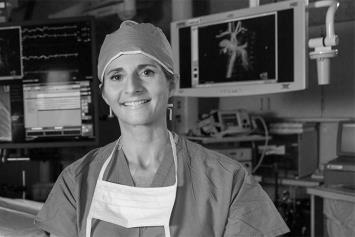Ewing Sarcoma
Ewing sarcoma is a type of cancer that mostly affects children and young adults. It usually starts in the bone or soft tissues.
What Is Ewing Sarcoma?
Ewing sarcoma (YOU ing sar CO ma) is a form of cancer that usually starts in the bone. It is the second most common tumor of the bone. It usually occurs in the long bones of the legs or arms or in the pelvis, chest wall, spine or skull. Ewing sarcoma can also begin in the soft tissues.
The tumors sometimes referred to as the Ewing Family of Tumors include Ewing sarcoma, atypical Ewing sarcoma and peripheral primitive neuroectodermal (PNET) tumor of the bone. They are found most often in people between the ages of 10 and 25. A change, or mutation, can be seen in the chromosomes of these tumors. This change is most often caused by problems that occur in the baby’s body before birth or by chemicals or radiation.
The chromosomal change is not part of the genetic make-up of the person with the tumor. It is only in the tumor cells. The cause of Ewing sarcoma is not yet known, but it is believed that the chromosomal change plays a big part. It is not thought to be inherited or contagious (catching).
What Are the Signs & Symptoms of Ewing Sarcoma?
The most common symptom is bone pain that keeps getting worse. There may also be:
- Swelling
- Redness
- Fatigue
- Fever
- Weight loss
- Tenderness of the tissues over the affected bone
Other symptoms are related to where the tumor is located. Classic symptoms include:
- Chest pain and shortness of breath (for tumors that originate in the ribs)
- Back pain and “sciatic-like” symptoms (in patients with tumors in the pelvis).
The spread of cancer to other places in the body is called metastasis (meh TASS tah sis). The most common places for Ewing sarcoma to spread are the lungs and other bones.
How Is Ewing Sarcoma Diagnosed?
The first step in diagnosis is a biopsy (a sample of the tissue of the affected bone) that is examined under a microscope. An X-ray of the bone may show possible Ewing sarcoma, but the biopsy is done to be sure. A biopsy will be done by the surgeon in the operating room or the surgeon’s office. This depends on where the tumor is located. A pathologist will then look at the tissue under the microscope.
Because Ewing sarcoma can spread to other parts of the body, a careful look for this spread is done before any further surgery or treatment. A chest X-ray and computed tomography (CT) scan will be done to check for spread to the lungs. X-rays of all the bones in the body and a bone scan are done to see if there are tumors in any other bones. A bone marrow test and bone marrow biopsy are done to check for spread of disease to the bone marrow.
How Is Ewing Sarcoma Treated?
Treatment for Ewing sarcoma involves surgery for biopsy or removal of tumor, chemotherapy, radiation or both. Chemotherapy is given over a period of 8 to 12 months. Your child will need to be admitted to the hospital for 3 to 6 days each time.
Surgical treatment usually happens after several cycles of chemotherapy. The type of surgery depends on where the tumor is located.
Follow-up Appointments
Your child will have follow-up appointments with an oncologist who will check his or her progress.
Every few months there will be more X-rays, chest CT or bone scans to check for signs of the tumor getting smaller or returning.
Blood tests will be done to check for side effects of therapy.
If you have any questions or concerns, please be sure to talk with your doctor or nurse.
Helping Hands Patient Education Materials
Written and illustrated by medical, nursing and allied health professionals at Nationwide Children's Hospital, Helping Hand instructions are intended as a supplement to verbal instructions provided by a medical professional. The information is periodically reviewed and revised to reflect our current practice. However, Nationwide Children's Hospital is not responsible for any consequences resulting from the use or misuse of the information in the Helping Hands.
HH-I-125 | ©1990, revised 3/17, Nationwide Children’s Hospital



